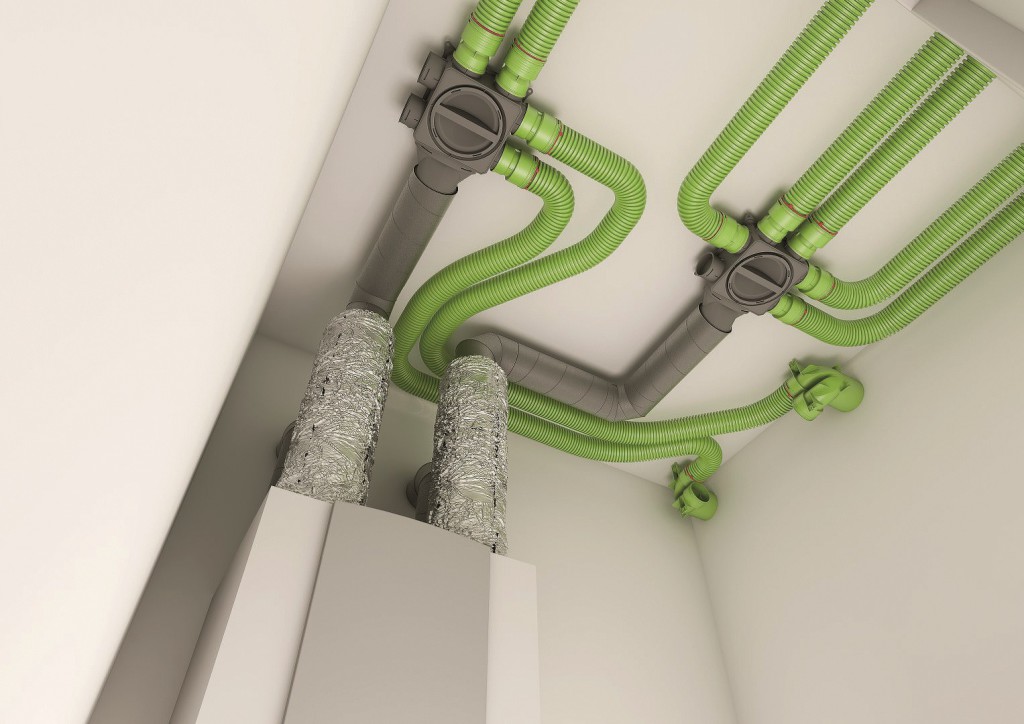Integration challenge

Ruth MacEachern, Product Manager at EnviroVent, addresses the challenges faced in integrating mechanical ventilation systems in ever more airtight homes, including Passivhaus.
Modern buildings are required to be more airtight and energy efficient than ever before to meet Building Regulations requirements and lower carbon homes that are more affordable to run. Although airtight buildings can be more comfortable for occupants, effective mechanical ventilation is essential to maintain consistently high levels of indoor air quality.
The main purpose of mechanical ventilation systems is to introduce fresh, filtered air and exhaust stale, contaminated air from buildings. These systems filter out pollutants, allergens and odours, improving the overall health and comfort of occupants. In addition, with the rise of pollutants, such as carbon particulates, in the atmosphere, there has become a greater need for high-grade filtration systems. Mechanical ventilation systems, particularly those used in Passivhaus buildings, are often equipped with high-efficiency filters that can effectively remove airborne particles and maintain a clean and healthy indoor environment.
Energy efficiency and heat recovery
Airtight homes can be made even more energy efficient through mechanical ventilation systems with heat recovery. These systems are designed to recover the heat from the outgoing air and transfer it to the incoming fresh air. This heat exchange process means MVHR systems can significantly reduce the energy required to heat or cool the incoming air, resulting in lower energy consumption and reduced carbon emissions. Heat recovery systems can typically recover about 73–95% of the heat in exhaust air – they can also significantly improve the energy efficiency of buildings.
Overheating can be mitigated with the summer by-pass function measuring indoor and outdoor temperatures, adjusting the ventilation speed accordingly.
However, it is important to firstly consider the main fabric of the building, orientation and shading to avert any potential overheating issues. While mechanical ventilation systems offer numerous benefits, their integration in airtight homes comes with its own set of challenges. Maintaining the integrity of the building envelope is crucial as any unintended air leakage can compromise the performance of the mechanical ventilation system.
Typically in newly constructed buildings, duct leakage can range from 25-40% (Source: Department of Energy report), which is unacceptable for
high-performance buildings like Passivhaus. To address this challenge, it is essential to ensure correct sealing of ductwork, which should minimise leakage to less than 3% of the system’s air volume. This requires a combination of effective design, quality
installation and rigorous testing to achieve optimal airtightness. Insulation and seals should be inspected to ensure they are intact and there are no gaps or leaks that could compromise the airtightness of the Passivhaus concept. Carrying out regular checks and maintenance is particularly important with Passivhaus ventilation systems.
Design considerations
Accurate system design and sizing of mechanical ventilation units is critical to their effective operation. A ventilation system must be able to provide an adequate supply of fresh air while maintaining the desired indoor air quality and comfort levels. Factors such as building occupancy, room sizes and ventilation rates need to be carefully considered during the design phase.
Undersized systems can lead to poor indoor air quality, while oversized systems may result in unnecessary energy consumption and increased costs. Working with a ventilation manufacture from the design stage can help ensure the right balance for optimal performance.
Commissioning

Commissioning is a vital step in the integration of mechanical ventilation systems to ensure the integrity of airtight homes. At this stage, an installer checks that the system is operating as per the manufacturer’s guidance and meets the design requirements of the build. During this stage, installers will test the system’s performance, verify airflow rates and ensure proper control and functionality.
To address the challenges associated with integrating mechanical ventilation systems in airtight homes, performance needs to be optimised. One of the ways this is achieved is through regular maintenance. Filters play a vital role in removing pollutants and therefore reducing risk of irritation and respiratory issues. This helps maintain proper airflow distribution and prevents blockages that can hinder the
ventilation system’s performance.
Air ducts and components should be inspected periodically and cleaning of units and replacement of filters should be carried out as directed by the manufacturer in order to enhance system efficiency and ensure high levels of air quality.
A professional ventilation maintenance service involves monitoring airflow and humidity and replacing any faulty parts. It will ensure that all components are functioning correctly and helps identify potential issues before they become a major problem.
Monitoring performance
Monitoring the performance of the mechanical ventilation system is essential to ensure it operates effectively to eliminate condensation and enhance indoor air quality. Regular checks on airflow rates, pressure differentialsand temperature levels can help identify any issues or deviations from the desired performance. This information can then be used to make necessary adjustments or repairs to optimise the system’s efficiency. This data is available on some mechanical ventilation systems via an app that forms part of the ventilation system controls, which is especially useful if a property is being managed by a social landlord.
Integration and optimisation
Integrating mechanical ventilation systems in airtight homes, including Passivhaus buildings, presents both challenges and opportunities for the construction industry.
Effective ventilation system design can go a long way to address the potential challenges posed by airtightness, with the result being improved indoor air quality, energy efficiency and reduced carbon emissions.
Mechanical ventilation systems are already playing a vital role in creating energy efficient and sustainable buildings which offer healthier and more comfortable living environments.







